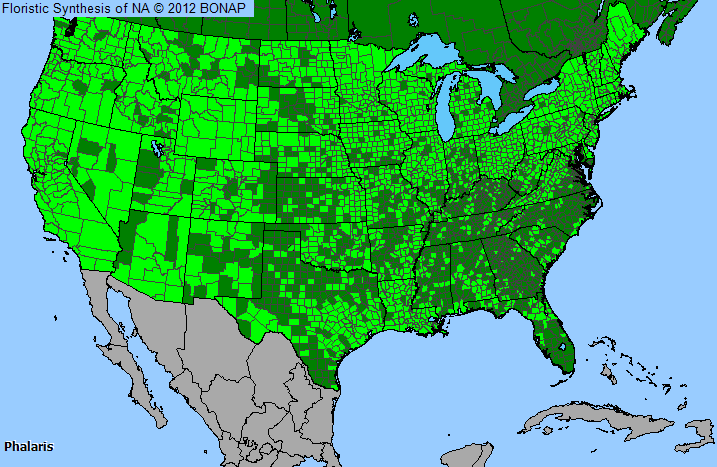
Plant Allergy Overview
Allergenicity
Moderate
Pollen Season
Spring Summer
Type
Grass
Sub-Type
Annual
Allergy Information
Reed canary grass flowers from June to August and is suspected of causing pollinosis in Minnesota. Phalaris species are considered to be the most serious allergenic pollen source in southern California. Phalaris minor sheds sparce pollen and is thought to have little allergenic importance.
Genus Details
Perennial or reed canary grass (Phalaris arundinacea), is native to North America and used as a forage crop, pasture and hay crop. It grows 2-6 feet tall with narrow leaf blades 3-16 inches long. The dense flower head spreads out with components up to 2 inches long. An annual species (P. canariensis) is native to Europe and a source of bird seed. It has narrow leaf blades up to 6 inches long and flowering spikes 1.5 inches long. Mediterranean canary grass (P. minor) is an annual. It grows to 1.5 to 2.5 feet tall and flowers in August in California.
Pollen Description
Grains are spheroidal to ovoidal, sometimes elliptical. The exine is thin and the surface is granular to finely reticuloid. Poaceae apertures are 1-porate, with the pores usually circular to ovoidal.
Grains are 22-122 micrometers in diameter.
Genus Distribution

The shaded areas on the map indicates where the genus has been observed in the United States.
 - Native, observed in a county
- Native, observed in a county  - Introduced, observed in a county
- Introduced, observed in a county  - Rarely observed
- Rarely observedSpecies in Canary Grass Genus
Allergens & Plants Search
Enter a full or partial species name to find more information on one of over 1,200 potentially allergenic plants.
For example, you can find chenopods searching on "cheno"

